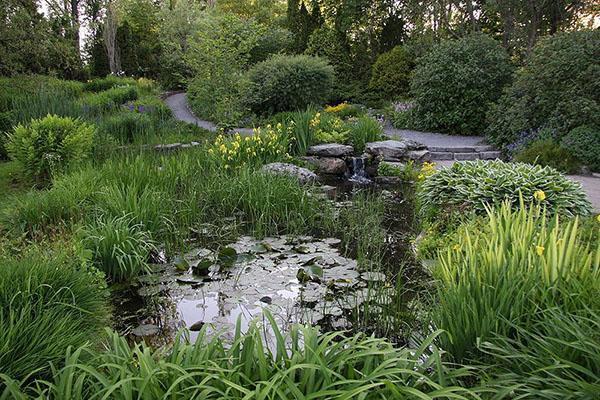How to transform a swampy area into a blooming oasis
 An area located in a swamp requires special care and more attention than a regular flat area. But if you think over the location of the zones correctly and choose suitable plants for planting, then you can make a unique design on your site.
An area located in a swamp requires special care and more attention than a regular flat area. But if you think over the location of the zones correctly and choose suitable plants for planting, then you can make a unique design on your site.
It is important to think over a drainage system in a swampy area, otherwise not a single plant will take root. Garden expanded clay or small pebbles can be used as drainage. In areas of a large area, drainage channels are dug or so-called dry streams are equipped.
Plants for a swampy area
Not all plants are suitable for planting in swampy areas. Therefore, its design has to be thought out taking into account the exclusion from the ecosystem of a plot of fruit trees, such as pear, apple, plum or peach. The roots of these trees go deep into the soil. Such plants do not like stagnant water.
But fruit trees can be replaced with pine, spruce or cedar. If there is not enough space on your site, then you need to plant dwarf pine varieties. For plots of medium size, dwarf cedar varieties are perfect. In such areas, you can plant ordinary spruce or blue spruce. Using verticals made of coniferous trees, the site can be visually divided into functional zones.
If you want to harvest in a wetland, plant fruit bushes.
In a swampy area, in the presence of drainage, red and black currants, gooseberries, rose hips, edible honeysuckle, bird cherry and other cold-resistant berry bushes take root well.
To grow raspberries or strawberries in such an area, you will have to prepare the planting site in a special way. This method is a little time consuming, but beautiful beds will give your site a neat look and become an additional design element.
Arrangement of beds
In order to equip a flower bed or garden bed in a swampy area, you need to dig a "curb" along its border. Further, the land in the garden bed is leveled with a rake, and then the "edge" is loosened with their reverse side. This must be done so that there is no stagnant water in the garden or flower bed. In addition, having loosened the soil with a rake, you will aerate it.
In a swampy area, the lawn grass must not be allowed to grow above 5 cm. The bed or flower bed should be 10 cm above the level of the mowed lawn in order for the plants to look aesthetically pleasing.